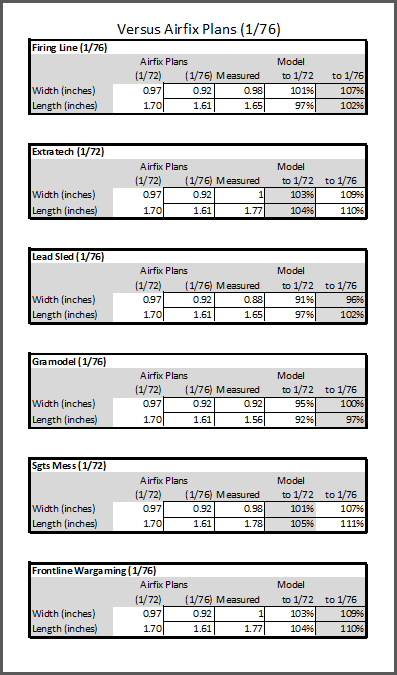This was a fun project – my shortest endeavor yet (only six months). I particularly enjoyed chasing down all of the kits from various cottage industry vendors or the aftermarket. Not quite as simple as going to the Sprue Brothers website!
The only real (as in there are more than 10 parts to assemble) and available kits are:
Thus, I’ll just do Pros/Cons for these three. You can refer to the individual blog pages for the other kits.
Bull Beaverette Mk I
Pros: Lots of detail; three great figures. Options to do a Mk I or Mk II. Well-molded. Accessories and stowage. Friendly vendor.
Cons: Some of the resin parts are tricky to remove (rods abutted to the pour block). No decals. No chassis detail.
Firing Line Beaverette Mk III
Pros: Lots of detail. High quality instructions. Theoretically possible to do an interior as the hull is folded PE rather than a resin block. You’ll feel good after wrestling the flat PE into place as a 3D model.
Cons: No chassis detail. No decals. Be prepared for soldering. Some of the PE parts are really small (grab handles).
Extratech Beaverette Mk III
Pros: Almost as much detail as the Firing Line. Includes decals. Twin Vickers machine guns are a nice touch. Chassis detail.
Cons: The two-part PE cylinder turret assembly is very tricky and if you mess up, recovery is ugly. The PE Vickers machine guns are difficult to assemble.
Last words
I’d buy additional kits from any of the above three vendors again – knowing that they’ll challenge me more than an injection-molded styrene kit. The vendors are serious about their offerings. In fact, I have several Firing Line and Bull Models kits awaiting work. I’m just waiting on the right inspiring photo.
That said, if you just want a Beaverette Mk III for a diorama and don’t have time to invest in constructing one of the above kits, consider the Gramodel Mk III. If you are lucky enough to get one without mold sinkholes, it is super easy to assemble and has enough detail to be compatible with your other vehicles. Or, find a Lead Sled Mk III for an almost as rapid assembly with reasonable detail.


